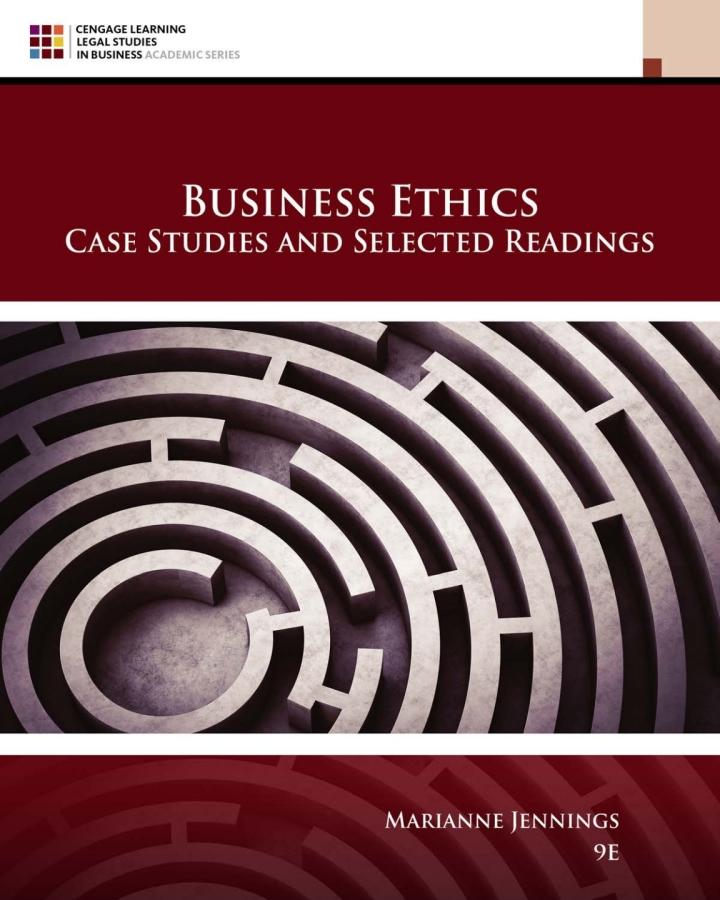Diamond Foods, Inc., was once a cooperative among walnut growers, known as Diamond Walnuts. In 2005, it
Question:
Diamond Foods, Inc., was once a cooperative among walnut growers, known as Diamond Walnuts. In 2005, it became a publicly traded corporation. The shareholders of the corporation included the farmers who were formerly members of the Diamond Cooperative. Upon this change in structure, the new CEO, Michael J. Mendes, undertook an aggressive strategy to make Diamond one of the country's largest snack food producers. Mr. Mendes expanded the company's products to include Kettle chips, Emerald snack nuts, and Pop Secret popcorn. In 2010, Mr. Mendes signed a deal with Procter \& Gamble to buy Pringles, the potato chips in a can. However, before the deal could be closed, accounting issues emerged that caused \(P \& G\) to call off the deal.
Growers noticed that Diamond was not paying them in the same quarter in which they were shipping their goods. Postponing payments from one quarter to the next results in income looking better than if the payment had been made in the proper quarter. Furthermore, there should be some correlation between payments and inventory, and analysts were not seeing the two working in tandem. Finally, the firm's cash account should reflect increases in sales, but again, because of the timing issues, the cash account did not reflect the increases being reported in sales. In 2011 , analysts noticed a \(\$ 60\) million payout to walnut growers, although many of those who received the checks as payment for their walnut crops had not signed agreements to sell walnuts to Diamond.
One of the problems that emerged once Diamond changed from cooperative to publicly traded corporation was that the price for walnuts that Diamond was paying was going lower because shareholder demands were for increased earnings. The result was that the company's revenues were increasing substantially, more than any of its competitors. However, the growers did not complain, because they were shareholders and were enjoying the returns of the revenue growth despite the poor pricing that affected them as sellers and also despite the accounting issues that were becoming increasingly obvious.
When the diamond growers received the checks from Diamond, they raised questions to Diamond about their entitlement to payment, but they were told to just cash the checks. However, a company cannot book expenses unless and until it actually has the title to the goods purchased. In this case, the farmers who received the checks were not aware that they were supposed to sell walnuts to Diamond. Indeed, some did not even have a crop to sell in 2010. The payments were made in order to keep revenues down for the year so that following the Pringles acquisition the earnings would look excellent, something that would have bolstered the CEO's acquisition strategy. During 2011, because of the 2010 cost-shifting, Diamond was able to beat earnings expectations for every quarter. Its performance far exceeded those of all the other companies in the snack food industry. Mendes pledged earnings growth of \(15 \%\) to \(20 \%\) for the next five years. The Pringles acquisition would have made Diamond the second largest snack company in the world, second only to PepsiCo.........................
Discussion Questions 1. How is this situation different from the other cases in this segment?
2. What were the consequences of the misrepresentation in the company's financial statements?
3. What should the grower/shareholders have done? Why did they not take any additional steps?
Step by Step Answer:

Business Ethics Case Studies And Selected Readings
ISBN: 9780357453865
9th Edition
Authors: Marianne M. Jennings





